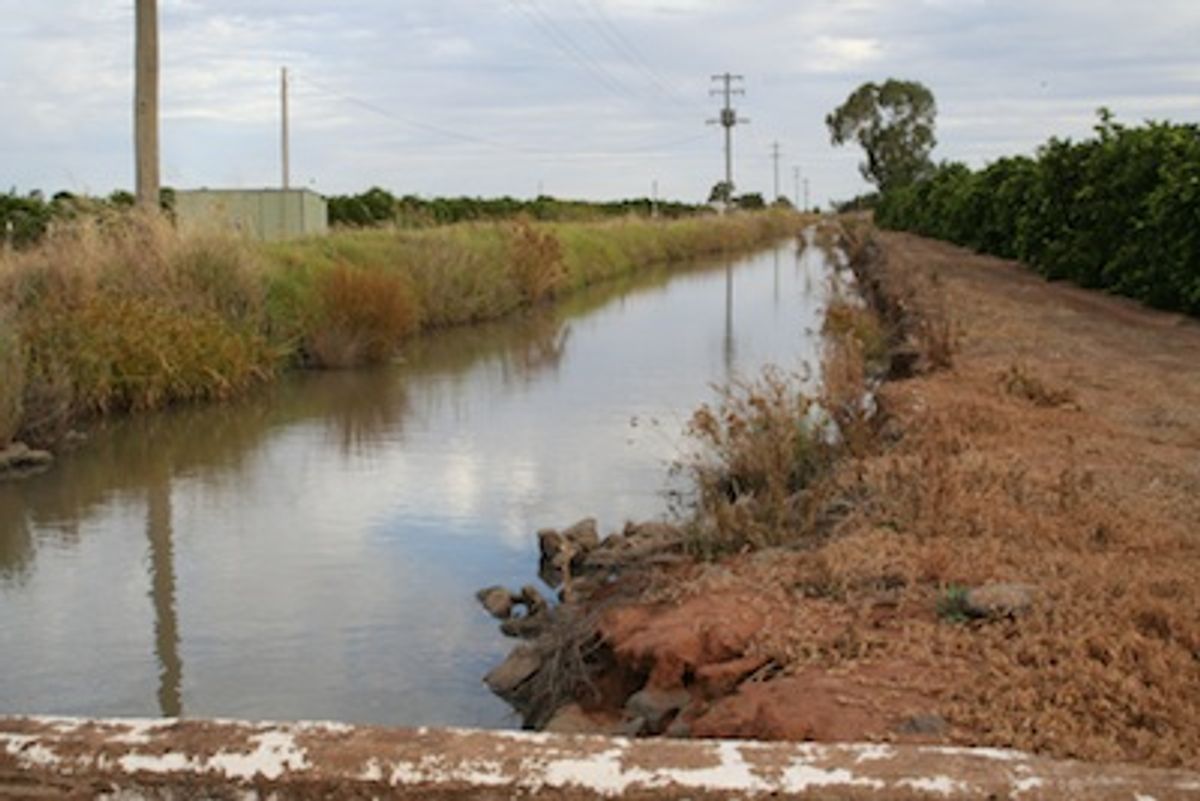For nearly a century, farmers in Griffith, New South Wales, have relied on an irrigation system that covers some 2600 square kilometers. The company that runs that network is Murrumbidgee Irrigation. Water flows from the Murrumbidgee River into two large storage dams and from there into a network of open, concrete-lined channels. It’s a gravity-fed system, which means that the water flows ever downhill, so there’s no need to pump it from place to place. When I drove around the Griffith countryside, my eyes were continually drawn to the channels—lovely avenues of water in an otherwise dry landscape.
But those channels lose water through evaporation and leaks, and the company fights a constant battle to maintain the channels. Recently, it decided to replace the channels that now feed about 12000 hectares of farmland with pumping stations and high-pressure pipelines. The result, says Murrumbidgee Irrigation managing director Brett Tucker, will be greater water savings but a hefty electricity bill: up to AUD$2.5 million (US$2.2 million) per year. The added costs will be passed along to the customers, Tucker says, which means they may end up paying more for the electricity to deliver the water than for the water itself. “Energy isn’t getting any cheaper,” he says. “Our customers are worried.”
Tucker believes the move to the pressurized pipelines is a good one, he says, but the tradeoffs also need to be looked at. In Australia, “the attitude has been to improve water efficiency at any cost,” says Tucker. “There’s been insufficient regard to the energy effects. You can’t treat water in isolation.”
Citrus grower Robert Sjollema is one of those whose farm will get the new pressurized water. Like a number of horticulturists in the area, he already has pumps and pipelines on his property to feed the drip irrigation system he installed about four years ago. Agricultural experts consider drip irrigation to be the most efficient type of
What drip irrigation does offer is greater automation: He can program exactly how much water he wants delivered for weeks in advance. That in turn cuts down on labor costs and has allowed him to supplement his farm income by working “in town.” “You don’t make much money growing citrus,” he notes.
For a fruit grower competing in a worldwide market, he says, globalization is actually a bigger concern for him than water. Australian navel oranges compete against navel oranges from Egypt, South Africa, and Chile, all of which have lower labor costs. Australian growers aren’t even guaranteed of selling to the domestic market, because the large supermarket chains here always look for the cheapest produce, regardless of origin. “If it’s cheaper outside of Australia, they’ll import it,” Sjollema says. “That’s the big cruel world.”
Jean Kumagai is the Executive Editor at IEEE Spectrum. She holds a bachelor's degree in science, technology, and society from Stanford University and a master's in journalism from Columbia University.





